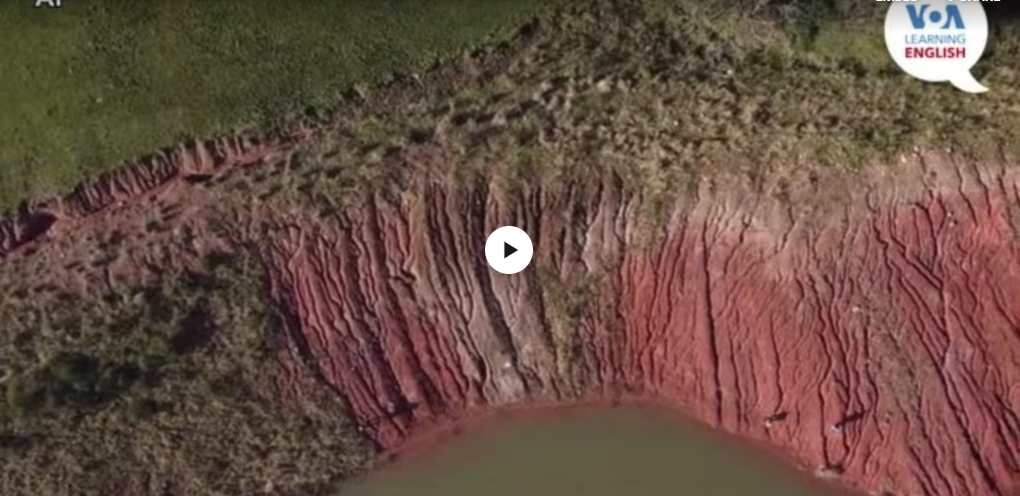Scientists in Brazil say heavy rains helped them discover a fossil they believe came from one of the world’s oldest dinosaurs.
Researchers found the fossil in May in Brazil’s southern state of Rio Grande do Sul. They said the fossilized bones make up nearly a complete dinosaur skeleton.
A leader of the team, paleontologist Rodrigo Temp Müller, said the fossil is believed to be about 233 million years old. It was discovered next to a body of water in the area of Sao Joao do Polesine.
Müller is with Brazil’s Federal University of Santa Maria in Rio Grande do Sul. He said heavy rains in the area had helped speed up the natural process of erosion that led to the discovery. Fossils are more likely to get exposed after rains because water washes away the dirt that covers them.
Details of the discovery have not yet been confirmed by other scientists or published in any scientific publications.
The researchers believe the dinosaur lived during the Triassic Period. The first dinosaurs are thought to have appeared at that time after Earth’s largest mass extinction event about 252 million years ago. During the Triassic Period, all continents were part of a single land mass called Pangea.
The team thinks the dinosaur belonged to a group known as Herrerasauridae. A document received by The Associated Press explains this family of creatures once lived on land that now makes up present-day Brazil and Argentina. The document said the size of the bones suggests the dinosaur would have been around 2.5 meters long.
After about four days of excavation work, researchers transported a large piece of rock containing the fossil back to their laboratory. There, they carried out tests.
At first, Müller said he thought the team had only collected “a few isolated bones.” But after detailed testing, the researchers said they had almost a complete skeleton.
Müller told the AP his team was “very excited and surprised” by the discovery. He said the new find might be the second most complete skeleton found for this kind of dinosaur.
The researchers are carrying out studies to see whether the fossil belongs to an already-known species or a new kind. The effort is expected to take several months.
Brazil’s Rio Grande do Sul state reported record rainfall earlier this year. Officials said the rain caused widespread flooding in May that led to at least 182 deaths. Some weather experts say climate change makes extreme weather events more likely. They say the burning of oil, gas and coal affects the climate.
Müller said other fossils appeared after the heavy rains. He noted these finds had launched a race against time to rescue the materials before they are ruined. For example, team members in the field said they had observed what appeared to be a leg bone and a pelvis bone. But they said these were in danger of being destroyed because of the rain.
Müller hopes the new discovery can help further explain the origins of dinosaurs. “Having new fossils that are so well preserved certainly helps us better understand this topic that is still much debated,” he said.
I’m Bryan Lynn.
The Associated Press reported this story. Bryan Lynn adapted the report for VOA Learning English.
_____________________________________________
Words in This Story
fossil – n. something (such as a leaf, skeleton, or footprint) that is from a plant or animal which lived in ancient times and that you can be seen in rocks
paleontologist – n. a person who studies fossils as a way of getting information about the history of life on Earth
erode – v. to slowly decay over time
extinction – n. a situation in which something no longer exists
excavate – v. to remove earth covering very old objects buried in the ground in order to discover things about the past
isolated – adj. not near to other places
species – n. a group of animals or plants that are similar and can produce young animals or plants
expose – v. to remove what is covering something so that it can be seen
origin – n. where something begins or comes from
preserve – v. to keep something from decaying, being damaged or destroyed
